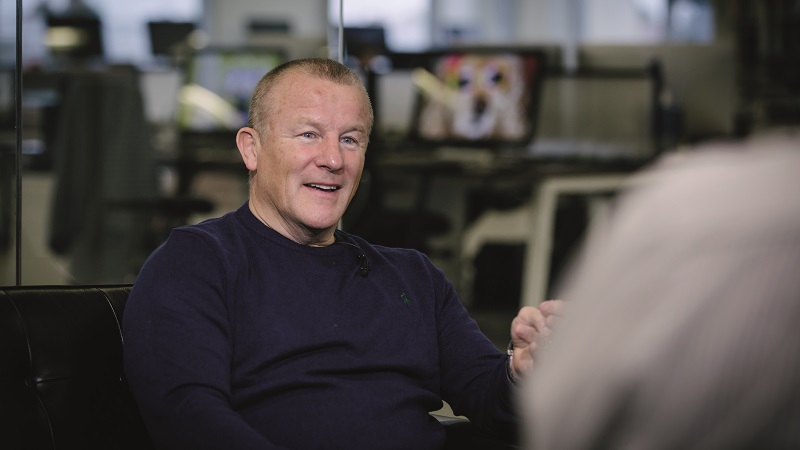When it comes to achieving diversification, many investors have increasingly turned to so-called alternative assets to provide a different type of return than that of traditional equities and bonds.
As an asset class, alternatives covers a range of investable areas. Typically these include property, infrastructure, renewable energy, commodities and private equity. It also covers hedge funds and absolute return, but investors who turned to the latter for shelter during last year’s rise in volatility would have been disappointed.
According to data from FE Analytics, funds within the IA Targeted Absolute Return sector produced an average return of -2.81% for the calendar year 2018, with just 16% of the 106 funds in peer group achieving a positive return.
The results were little better in the three other main multi-asset sectors, with funds in IA Mixed Investment 40-85% Shares down on average 6.11%, Mixed Investment 20-60% down by 5.1% and funds in the lowest risk Mixed Investment 0-35%. Shares producing an average return of -3.35%.
Achieving uncorrelated returns is not easy and finding them is akin to discovering the Holy Grail of investments.
Long/short, Reits and infrastructure
With asset classes seemingly more correlated, according to Ryan Hughes, head of active portfolios at AJ Bell Investments, it is harder to find true diversification.
He says this challenge has not been helped by the fact that many absolute return strategies have also been struggling. “That
said, I do still see value in some high-quality alternatives and use long/short equity funds and global macro as a way of adding diversification
to our portfolios,” says Hughes.
“However, it pays to be selective in this space as many have found to their cost, and therefore we like the tried-and-tested approach of Janus Henderson UK Absolute Return with its long/short equity approach.
“We also use the H2O Multi Returns fund in some portfolios, particularly as its global macro positioning can be very different to traditional funds.”
Taking a broader view, Hughes also uses Reits and infrastructure as a way of diversifying but acknowledges this comes with some short-term equity beta. Meanwhile, he has had no exposure to physical property for the past 15 months.
“Overall, our usage has stayed broadly static in the past 12 months, not least as when we launched our Active MPS we felt equity markets were already quite expensive and therefore launched with exposure to alternatives at the outset,” he says.
“Despite this, it may be an area we look at again soon as equity markets have rallied strongly since the start of the year.”
Differentiated returns
For Ben Yearsley, director at Shore Financial Planning, the point of holding alternatives is to provide an uncorrelated return to equities and fixed income.
“But it’s no good just behaving differently; alternatives also have to deliver some performance,” says Yearsley.
“It is for this reason that absolute return by and large fails to get into my portfolios. Most participants in the sector have failed to deliver on their objective, which quite simply is to deliver an absolute return in different market environments.”
For this reason Yearsley mainly uses property as an alternative, which, despite its problems, still acts as a diversifier and provides real asset backing. However, he has not increased his weighting to the asset of late.
“I have also recently considered gold, which, with rates peaking in the US and possibly starting to fall, may come into its own,” he says. “It’s a real store of value over the long term but doesn’t provide an income and will underperform massively at times.
“I also use infrastructure but I’m not sure it acts as a massive diversifier away from equities or bonds. Again, though, it provides asset backing (depending on what you buy), helping underpin investment at a time when many other investments look expensive.”
Long/short funds face difficult task in expensive markets
Chris Rush, senior investment analyst at Iboss, says absolute return funds, especially long/short portfolios, are in a very difficult position. This is because expensive stocks continue to become increasingly expensive, while cheaper stocks remain relatively cheap, making any short positions particularly precarious.
“We would therefore prefer to hold more defensive multi-asset funds that can provide defensive returns but are less likely to be overtly affected, either positively or negatively, by the winners of last year,” he says.
“As such, we have sold out of many of our absolute return funds and have instead looked to multi-asset funds such as Investec’s Diversified Income.”
The other alternative assets Iboss holds, Rush explains, are similarly removed from the trendy, heavily selective areas of the market. He says Q4 ’18 provided ample opportunity to discover just how exposed your portfolio was to momentum.
“While we struggle to see a case for many absolute return funds, we suspect diversification will be key,” he says.
“We continue to hold gold and US treasuries, which provided strong non-correlated returns during the fourth quarter of last year and remain underweight US equities and cautious on many who have become more selective.”











